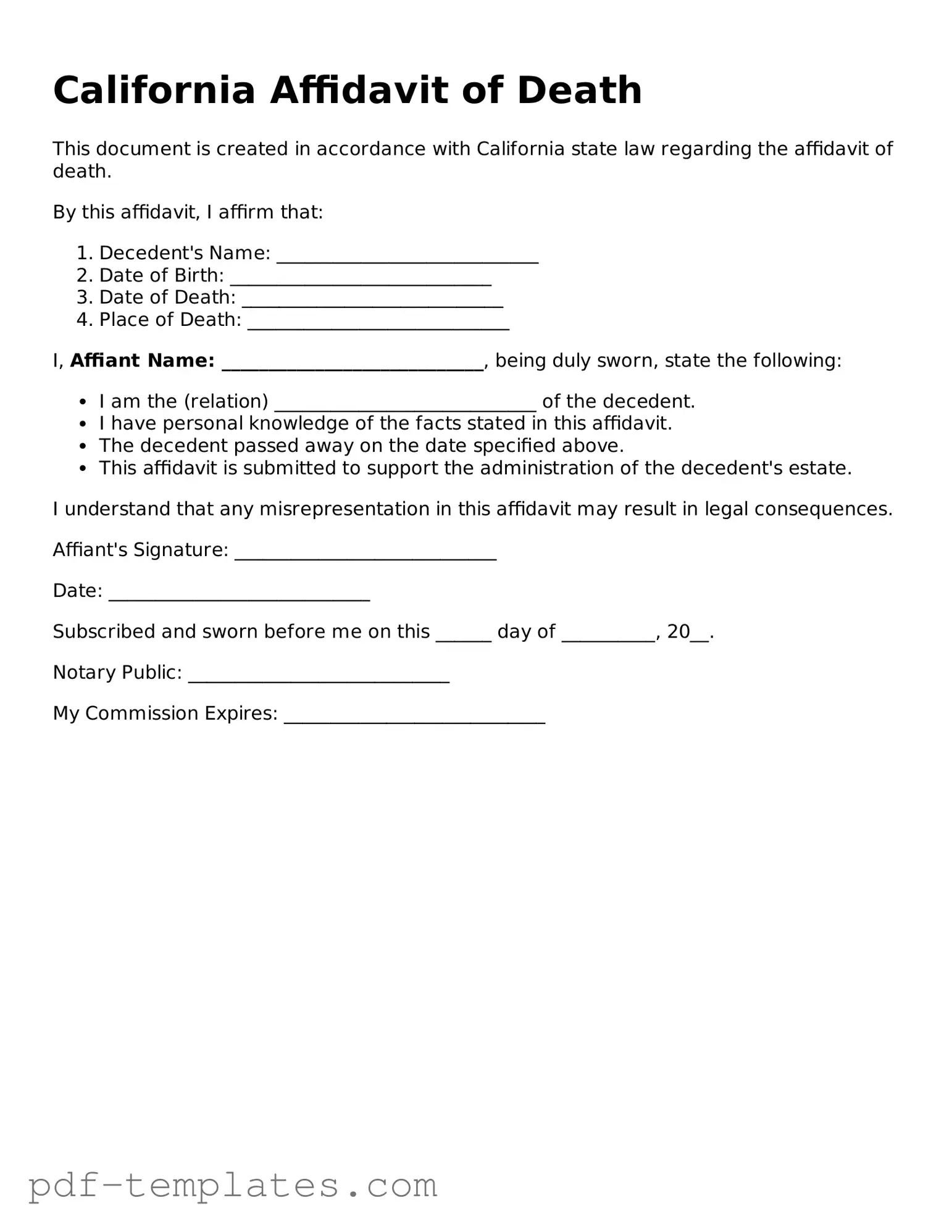The California Affidavit of Death is similar to the Affidavit of Heirship, which is used to establish the heirs of a deceased person. This document is particularly useful in situations where the deceased did not leave a will. By providing evidence of family relationships, the Affidavit of Heirship helps facilitate the transfer of property and assets without the need for formal probate proceedings. Both documents serve to clarify the legal status of a deceased individual, but the Affidavit of Heirship focuses more on identifying heirs rather than confirming the death itself.
Another document that shares similarities with the California Affidavit of Death is the Death Certificate. A Death Certificate is an official government document that confirms a person's death and includes vital information such as the date, place, and cause of death. While the Affidavit of Death may be used in conjunction with a Death Certificate, it serves a different purpose by allowing individuals to affirm the death for legal or financial matters, such as settling an estate or transferring property.
The California Affidavit of Death also resembles the Petition for Probate, which is filed when a person seeks to open a probate case for a deceased individual. This petition initiates the legal process to settle the deceased's estate, and it requires proof of death, typically through a Death Certificate. While both documents deal with the deceased’s estate, the Petition for Probate is more comprehensive and involves the court, whereas the Affidavit of Death is often a simpler, informal declaration used outside of court proceedings.
Understanding the various legal documents surrounding death and estates can be complex, but resources are available to help streamline the process. For instance, the California Loan Agreement form serves as a crucial tool in many financial transactions. Whether you need information on borrowing or lending, you can refer to All California Forms for guidance, ensuring that all parties involved are protected and informed about their obligations.
In addition, the California Affidavit of Death is akin to a Will, particularly in how it addresses the distribution of a deceased person's assets. A Will outlines the wishes of the deceased regarding their property and beneficiaries. Although the Affidavit of Death does not specify how assets should be distributed, it may be used to support the execution of a Will by confirming the death of the individual whose estate is being settled. Both documents are crucial in ensuring that a person's final wishes are honored and legally recognized.
Lastly, the California Affidavit of Death is similar to a Trust Certification. A Trust Certification is a document that verifies the existence of a trust and the authority of the trustee to act on behalf of the trust. When a trustor passes away, the Affidavit of Death may be needed to confirm the death of the trustor and facilitate the management or distribution of trust assets. Both documents play significant roles in the administration of estates, ensuring that the deceased's intentions are followed and that legal processes are adhered to.
